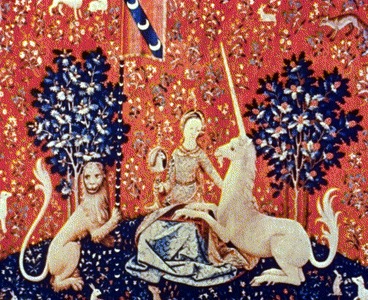

|
| ||||||||||||||||||||||||||||||||||||||||||||||||||||||||||||||
|
||||||||||||||||||||||||||||||||||||||||||||||||||||||||||||||
|
| ||||||||||||||||||||||||||||||||||||||||||||||||||||||||||||||

the essential nature of myth—Page 5gods, demigods, and mortals
Gods like to interact with other gods, but they are not snobbish or exclusive about it. Although superior to demigods, gods like to mingle and interact with them. Gods also like to interact with mortals. Interactions between gods, demigods, and mortals are where most of the fun and meaning originate in a myth. One of the favorite pastimes of gods is to shape-shift. Gods will shape-shift themselves or other gods into gods, demigods, mortals, plants, or inanimate objects. Gods will use their powers to shape-shift any of these organic or inorganic entities into any other. In some myths, shape-shifting goes on all over the place. Shape-shifting is closely aligned with transforming. A transformation is a type of metamorphosis. Sometimes a transformation consists only of a change in form, appearance, or structure; the thing that's transformed remains the same inside. Pinocchio's large nose was such a change; so was his transformation to an ass. (By the way, Pinocchio is a fairy tale, not a myth). Sometimes a transformation is a more fundamental kind of metamorphosis, a change in condition, character, nature, or substance. The thing inside is no longer the same as it was. This kind of change is so basic, perhaps it is more accurate to describe this kind of transformation as a transmutation. According to the myth, Hyacinthus was a youth loved but killed by Apollo. Apollo's affection was so great, a hyacinth sprang from the youth's blood. The classical Roman poet Ovid's masterpiece, Metamorposes, is based on these ideas. Metamorposes is a poetic narrative based on Greek classical myths, a collection of accounts of mythological gods who transform themselves into other entities. Depending on the tale, gods are transformed into other gods, demigods, people, or nonhumans. And that's not all. Gods or men are transformed into plants and inanimate objects. The gods can shape-shift or take on the appearance of other gods, demigods, or mortals without being transformed in an essential way. The effective causes and other circumstances of the transformations vary from tale to tale.
myths, gods, demigods, and mortalsThe specific reasons for transformations vary with the myth. Sometimes a transformation is just good, clean, fun. Characters in other myths shape-shift to punish, to grant a heart-felt wish, to foster a crime or commit an indecent act, or to test or try someone's mettle; there are a host of other possibilities.
What happens to a god's powers before and after he is transformed into another god, demigod, mortal, or inanimate object? What happens to a demigod's powers before and after transformation? If you have ask these kinds of questions, you're probably expecting too much literal truth from the myth. When it comes to matters of characterization and plot, myths are not shy. If a myth wants you to know its whys and wherefores, it will tell you what they are straight out. Here are a few other issues that mythologies and myths may not resolve:
Mythologies don't spend much time or effort trying to build logical and consistent explanations for questions like these. Miraculous events usually just happen. Myths aren't like the game Dungeons and Dragons, where there are clear rules that govern play, where every character has a specified function or responsibility, where moves are legal or illegal, and where powers are measured with point values and can change. Nor are they like science fiction stories, where there's a scientific explanation for almost everything. A myth's rules are in place to make a moral point or teach a rule of life; they are conveniences that can be changed as needed to make a point. Myths aren't very interested in exploring the causes and effects that govern physical changes but they are interested in exploring the causes and effects that govern emotional, spiritual, moral, or social relationships. Characters in myths usually behave and look like their real-life counterparts; they act and think like humans. Myths are almost always about subjects like virtue, vice, greed, power, powerlessness, glory, shame, vainglory, force, war, combat, love, sex, avarice, jealousy, hate, good and evil, the creation and destruction of the universe, life and death, and living and dying. Myths are anthropomorphic. They tell stories about animals, plants, inanimate objects, demigods, gods, and heroes who are not human, but these creatures act, think, and feel like humans do. They assign human forms and behaviors to deities and other nonhuman beings to encourage us see ourselves through the actions of others. That way, our strengths and weaknesses are easier for us to recognize, admit, revel in, accept, regret, and heal. At base, myths explore man's relationship to men. The gods and the other players in a myth are literary devices for displaying human behavior and exploring human relationships. Nonhuman characters succumb to the same challenges, are subject to the same laws of cause and effect, and experience the same kinds of triumphs and failures in the same ways as real humans do in real-life situations. The immutable and alterable laws that govern human behavior are the means by which a mythical story plays itself out. ETAF recommends...Coming.
Search this web site with Electricka's Search Tool:
tap or click here
Electricka's Theme Products
Shop At Cafe Press
This web site and
its contents are copyrighted by
Decision Consulting Incorporated (DCI).
All rights reserved. |
| |||||||||||||||||||||||||||||||||||||||||||||||||||||||||||||